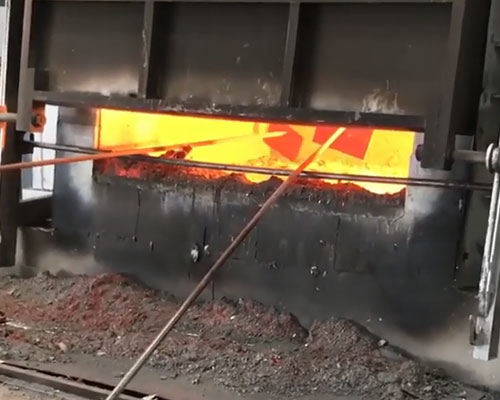In order to remove the slag and gas in the melt, in addition to the use of flux refining and degassing filtration equipment for purification, the control of the smelting process cannot be ignored.
Control of Aluminum Smelting Process
First, choose dry raw materials (including refining agents) that contain less slag. All kinds of furnace materials and tools should be cleaned of oxidation marks, soil, moisture, oil, etc. before entering the furnace, and should be preheated and dried.
Secondly, it is necessary to reduce the melting temperature as much as possible and shorten the holding time of the melt. When the smelting or casting temperature is too high, metal oxidation is likely to occur, and the gas content of the melt will also increase, resulting in slag inclusion and pore defects in the ingot. However, when the casting temperature is too low, because the slag and the precipitated gas in the melt will not have time to surface, it will also cause slag inclusion and pores.
The solubility of hydrogen in aluminum and aluminum alloys increases with increasing temperature. Therefore, under the premise of meeting the refining effect and casting temperature, low-temperature operation should be adopted as much as possible to prevent the melt from overheating and long-term heat preservation. After the melt is refined in the furnace, if the holding time exceeds 4h, and cannot enter the next process to continue production, it should be refined again. For a static furnace, every time it is refined, it is necessary to keep the furnace clean and clean the slagging in the furnace in time.

Through the purification treatment in front of the furnace and the control of the smelting process, a large amount of inclusions and gases can be removed, the slag content in the aluminum liquid is significantly reduced, and the content of alkali metals such as Na, Mg, Li, and Ca and alkaline earth metals can be reduced. Reduce to a minimum, thereby improving the purity and cleanliness of the melt.
After measurement and analysis, the mass fraction of Na in the electrolytic primary aluminum produced by the pre-baked aluminum electrolytic cell is generally about (80-150) x 10^-6, and the Na content after multiple purification treatments is generally (1-3) x10 ^-6 or so, which can fully meet the requirements of calendering. The hydrogen content in molten aluminum can also be effectively controlled. As far as the cast-rolled plate production process is concerned, the hydrogen content at the outlet of the standing furnace is 0.25 ~ 0.35 mL/100gAl, and the outlet of the on-line rotary degassing box is 0.18 -0.22 mL/100gAl. The outlet of the ceramic foam filter equipment is 0.12-0.15 mL/100gAl.

